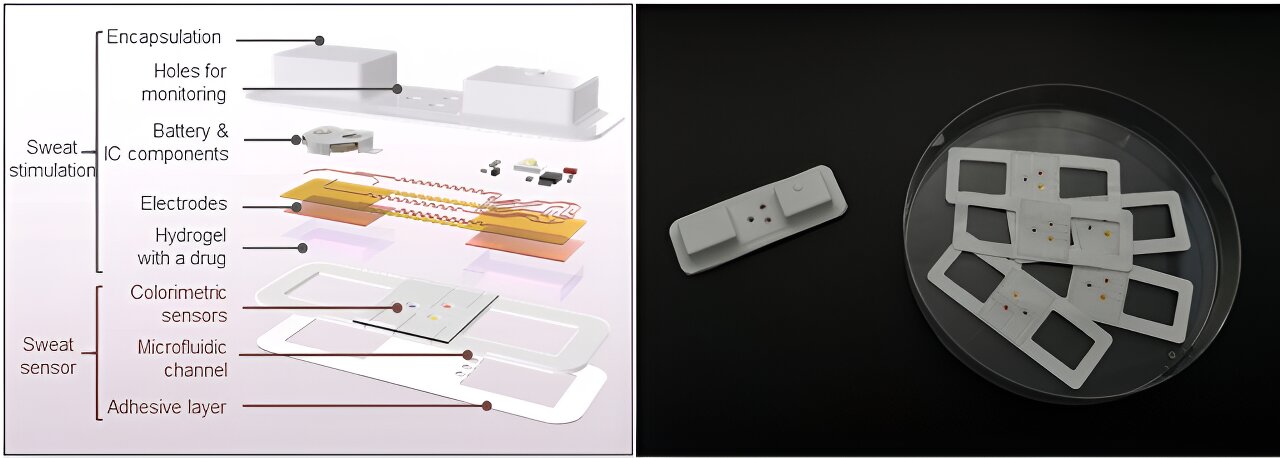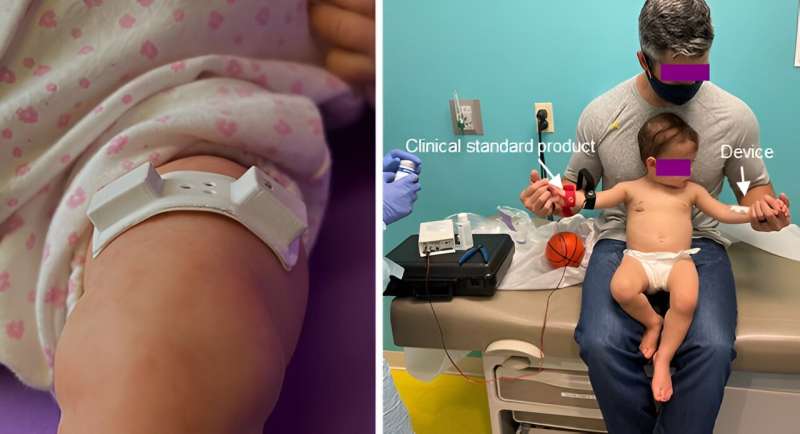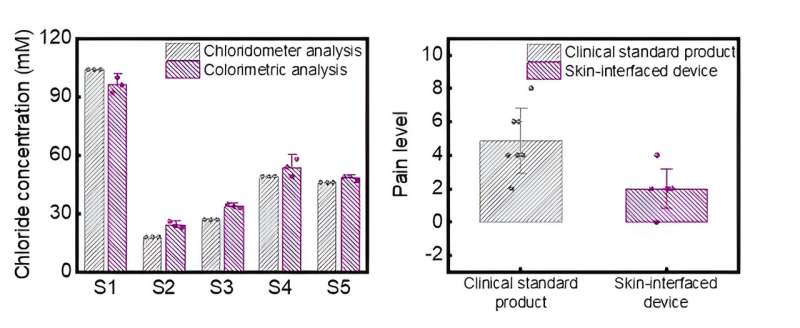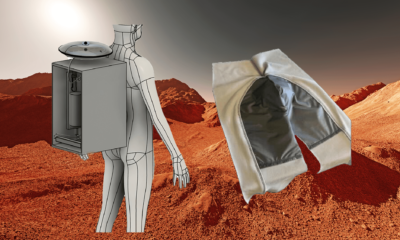Health
The new sweat monitoring device does not require any physical activity

Illustration and photo of the device that can deliver drugs for sweat induction and simultaneous monitoring of biomarkers in sweat. Credit: Korea Institute of Science and Technology
Sweat contains biomarkers that can monitor various health problems, from diabetes to genetic conditions. Sweat sampling, unlike blood sampling, is preferred by users due to its painless nature. However, obtaining enough nutrients or hormones from sweat for testing previously required intense physical activity to induce sweat. This method posed challenges for persons with reduced mobility.
Dr. Kim Joohee of the Bionics Research Center of the Korea Institute of Science and Technology (KIST) and Professor John A. Rogers of Northwestern University jointly announced the development of a useful sweat monitoring device that requires no physical activity but provides drug stimulation by the skin. The work is published in the news Biosensors and bioelectronics.
Unlike previous methods that induced sweat through exercise, this device delivers drugs that stimulate the sweat glands through the skin.
The research team developed a flexible device that can deliver drugs to the sweat glands by applying current to a hydrogel containing drugs. This device, which is small and soft, can easily be attached to the skin.
Drug-induced sweat is collected in microfluidic channels in the device and analyzed for biomarkers using biosensors. This enables the analysis of biomarkers in sweat, reducing the need for cumbersome hospital visits for testing and lowering the risk of biomarker contamination during testing, thus increasing accuracy.

A child with the traditional wired device on the left arm and the evolved device on the right arm, administering medications to stimulate the sweat glands. Credit: Korea Institute of Science and Technology
The device developed by the research team was attached to babies with cystic fibrosis and chloride concentration, a biomarker in sweat, was confirmed. The results were consistent with those obtained from traditional analytical methods using sweat collected in hospitals, with an accuracy of more than 98%.
Furthermore, the stability of the device on the skin was ensured by confirming the skin temperature and pH values. Because cystic fibrosis manifests mainly during childhood, continuous monitoring of disease progression and physical condition is necessary. This device allows monitoring to be easily performed at home, reducing psychological and physical stress on pediatric patients and their caregivers.

(Left) Graph showing more than 98% agreement between the traditional diagnostic method and the biomarker analysis results of the developed device for five patients. (Right) Graph comparing the pain perception experienced by patients during disease monitoring using the traditional diagnostic method and the developed device. The graph indicates that the developed device causes less discomfort compared to the traditional diagnostic method. Credit: Korea Institute of Science and Technology
This newly developed device also contributes to the expansion of non-invasive technology for sweat-based disease monitoring in healthy adults. In addition, the technology of delivering drugs through the skin can be used not only to induce sweat, but also to increase the delivery rate of drugs to localized areas such as skin conditions or wounds, thereby accelerating recovery.
Dr. Kim Joohee said: “Through two years of research in collaboration with Northwestern University, we have not only addressed the limitations of existing sweat inducing methods, but also achieved success in clinical research, bringing us one step closer to commercialization. “
Professor John A. Rogers added: “We plan to conduct large-scale clinical trials and commercialization in the future, including for adults.”
More information:
Joohee Kim et al., A skin-attached, miniaturized platform for triggered induction, collection, and colorimetric multicomponent analysis of microliter volumes of sweat, Biosensors and bioelectronics (2024). DOI: 10.1016/j.bios.2024.116166
Quote: New sweat monitoring device requires no physical activity (2024, May 28), retrieved May 29, 2024 from https://medicalxpress.com/news/2024-05-device-doesnt-require-physical.html
This document is copyrighted. Except for fair dealing purposes for the purpose of private study or research, no part may be reproduced without written permission. The content is provided for informational purposes only.













